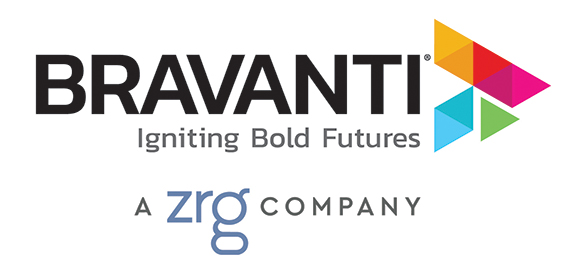In today’s ever-evolving world of business, change is constant.
Whether it’s adapting to new technologies, shifting market dynamics, or internal restructuring, organizations are in a perpetual state of transformation. Even so, the success of any change initiative hinges not just on the strategy but also on the organization’s cultural fabric.
In this article, we delve into the intricate relationship between organizational culture and change management. By addressing pivotal questions, leaders can navigate the complexities of change with greater clarity, ensuring that their initiatives are not only strategically sound but also culturally attuned.
As you embark on this insightful journey, you’ll discover the significance of culture in shaping change outcomes and the critical considerations that can make or break your change management efforts.
What is Change Management Planning and Why is It Important?
Change management planning is a strategic approach to transitioning individuals, teams, and organizations from their current state to a desired future state. It ensures that changes are smoothly and successfully implemented to achieve lasting benefits.
In today’s rapidly evolving business landscape, change management planning is crucial. It not only helps organizations adapt to market shifts and technological advancements but also ensures that employees are well-prepared, engaged, and aligned with the company’s vision. Effective change management planning minimizes resistance, maximizes engagement, and ensures that the organization’s objectives are met efficiently.
The Role of Culture in Change Management Planning
Culture is the lifeblood of an organization. It encompasses the shared values, beliefs, and behaviors that dictate how employees interact and work. When it comes to change management planning, culture plays a pivotal role. A supportive and adaptive culture can accelerate change initiatives, while a resistant or misaligned culture can hinder them.
The significance of culture in change management planning is that it ensures change management strategies are not only technically sound but also culturally compatible. This alignment fosters a conducive environment where employees feel valued, understood, and motivated to contribute to the change process.
Must-Ask Culture Questions in Change Management Planning
Before diving into a change initiative, it’s essential to understand the cultural landscape of your organization. These questions serve as a guide to gauge the cultural readiness and potential challenges that might arise during the change process.
1. What is the current state of our culture?
Evaluating your company culture prior to change allows you to assess organizational readiness, identify challenges, and align values.
This is usually performed through the following:
- Surveys and Feedback: Conducting regular employee surveys can provide insights into their perceptions, feelings, and experiences related to the company culture.
- Observational Analysis: Observing team interactions, communication patterns, and collaboration methods can offer a firsthand view of the culture in action.
- Historical Context: Reflecting on past events, decisions, and milestones can shed light on the evolution of the company’s culture over time.
With the insights gleaned, you can tailor the change initiative for success, fostering a supportive environment that drives collective achievement.
2. What are the values, norms, behaviors, and practices that govern our culture?
Values, behaviors, norms, and practices shape the collective mindset and actions of employees, influencing how they perceive and adapt to change.
Every organization has a set of unwritten rules and shared beliefs that guide daily operations and interactions. These include:
- Values: The core principles that guide decision-making and behavior. They are the foundation of the company’s identity and purpose.
- Norms: The unwritten rules and expectations about how employees should behave in various situations. They shape the day-to-day interactions and can either promote or hinder collaboration.
- Behaviors: Observable actions and reactions of employees in different scenarios. These can be influenced by both individual personalities and collective culture.
- Practices: Established routines, rituals, and traditions that reinforce the company’s values and beliefs. These can range from regular team meetings to annual company retreats.
Assessing these early helps to uncover any resistance, potential conflicts, or areas for improvement, allowing you to proactively address them during the change management planning stage.
3. What is blocking true change in our organization?
Examining past failed change efforts provides valuable lessons and insights for future initiatives. It allows you to identify patterns, determine what worked and what didn’t, and implement corrective measures.
Barriers to change can be multifaceted, ranging from structural challenges to individual resistance. Key areas to explore include:
- Organizational Structure: A rigid hierarchy can impede the flow of information and decision-making, making it difficult to implement change.
- Communication Gaps: Lack of clear communication can lead to misunderstandings, misconceptions, and resistance to change.
- Resource Limitations: Insufficient resources, whether it’s time, budget, or manpower, can hinder the successful implementation of change initiatives.
- Past Experiences: Previous unsuccessful change efforts can lead to skepticism and reluctance among employees.
By leveraging the knowledge gained from failed change initiatives, your organization can increase the chances of successful change implementation while simultaneously driving continuous improvement.
4. How is our leadership helping or hindering a unified culture?
Leaders play a pivotal role in shaping and influencing organizational culture. Their actions, decisions, and communication styles can either foster unity or create divisions. Key considerations include:
- Leadership Styles: The approach leaders take to manage teams can influence the overall culture. For instance, a collaborative leadership style can promote teamwork, while an autocratic style might stifle innovation.
- Vision and Direction: Leaders should provide a clear vision and direction for the company, ensuring that everyone understands and aligns with the company’s goals.
- Feedback Mechanisms: Leaders should be open to feedback, both positive and negative, to understand the pulse of the organization and address concerns promptly.
- Role Modeling: Leaders should embody the values and behaviors they wish to see in their teams, setting a positive example for others to follow.
Evaluating your leaders before launching a change initiative helps to ensure that leadership practices align with and directly support the mission.
A Final Thought on Change Management Planning
With the right culture and strategy, change can be a catalyst for growth and success. Embracing change management planning with a keen understanding of your organization’s culture ensures that transitions are not only smooth but also transformative, leading to sustained success and growth.
Learn more about our organizational change readiness assessment services – Book a complimentary consultation today!
Content Related to Change Management Planning: 4 Key Culture Questions to Ask Before Taking the Leap
Conquering Change: A Video Series
Words Matter: The Leader’s Guide to Change Communications
[Free Checklist] The Leader’s Guide to Change Communications

